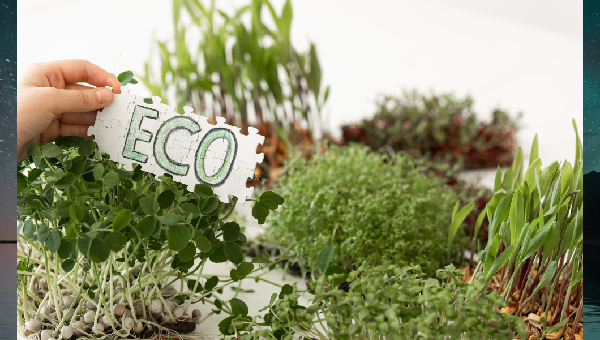Genius Ways to Keep Toddlers Entertained While You Get Things Done
10 Ways to Reduce Your Carbon Footprint in 2025

With people around the globe paying more attention to the looming environmental challenges including disasters such as global warming, it’s now more than ever that you should consider minimizing your carbon footprint. In 2025 the impact of global warming can be reduced by individual and even combined efforts. Here are ten strategies that you can use to lower your carbon footprint and improve the quality of the climate.
Embrace Energy-Efficient Practices at Home
Using efficient appliances and lighting has got to be the most straightforward yet most effective way of reducing one’s carbon footprint. Light-emitting diode bulbs, for instance, will consume far less energy compared to the commonplace incandescent bulbs. Moreover, there are other ways to avoid wasting energy including insulation, weatherproofing the windows and contact a Programmable Thermostat. Switching appliances off when not required as well as charging electrical gadgets in a single socket also extends the ideas that were earlier discussed on power conservation. Energy-saving methods also include the installation of home automation technologies that allow controlling all the devices to consume energy efficiently, and conveniently. Other small ways of conserving energy include hanging washed clothes to dry rather than using the dryer and washing clothes in cold water rather than hot water.
Transition to Renewable Energy Sources
This is increasing with many homes and industries now relying on clean sources of energy. In years gone by, many people installed solar panels, windmills, and geothermal systems; today, it is easier to install these and cheaper. If the installation of renewable energy systems is made impossible or impracticable, then the energy customer must choose a provider that uses renewable energy in their energy supply. This change also aids in minimizing dependence on fossil products, which are among the key sources of carbon monoxide. In addition, there will be lots of incentives and subsidies to go green in 2025 to require green energy solutions making it a good time to invest in cleaner power. Another way of using sustainable energy is to participate in community solar or leasing companies for the least costly sources of energy without compromising on the amount of sustainable energy.
Reduce, Reuse, and Recycle
Use less, use again and reuse approaches are very useful as they play a big role in cutting waste and greenhouse emissions. Only buy products that come in smaller packaging, where possible use the items frequently like water containers, and carrier bags and ensure that others that can be recycled like papers, glass and metals are disposed of properly. Another way through which composting has proven useful is that it can reduce methane emissions, especially from landfills. Furthermore, recycling wastes into artefacts that are partly new and useful is also a creative ability that helps human beings practice sustainable life. Such activities can be extended by promoting circular economy principles in which firms avoid disposing of or throwing away their products and materials.
Opt for Sustainable Transportation
Traffic transport is perhaps the leading cause of greenhouse emissions in the world today. Choosing public transportation, car sharing or riding, biking, or walking can cut an individual’s carbon footprint by nearly half. Buying electric or hybrid automobiles would be a wise idea if you are planning to buy a new car. Whereas when traveling a long distance prefer trains instead of planes because the latter emits more greenhouse gases. Big cities in the year 2025 are upgrading their roads developing charging stations for electric cars and introducing bike-sharing services, which are comfortable and environmentally friendly. Moreover, environmentally friendly care of your vehicle, such as ensuring that tire pressure is always correct, and regular servicing of the vehicle will also increase fuel efficiency as well as decrease emissions.
Support a Plant-Based Diet
Elevage is a process with high environmental impact, especially with regard to the quantity of greenhouse gases produced. Even changing a diet only partially or switching to plant-based food can reduce the negative impact of a person on the environment. Try to take more raw products, especially fruits, vegetables, legumes, and grains and eat seasonal and locally grown products to minimize emissions generated on their transport. Aside from environmental gains, praise-worthy health could be achieved by taking plant-based products and cutting the chances of developing chronic diseases and the food chain can support the increasing global population. They include adopting practices such as ‘Eat-less-weeks’ or eating a serving of meat by containing a plate of vegetables which are easily available.
Conserve Water
Water conservation not only preserves this necessity in people’s daily lives but also lowers energy use connected with water purification and heating. Other practices include repairing leaks, using conserved faucets and shower heads and adopting efficient appliances. Furthermore, an example of a very productive water conservation practice entails using water that has been harvested from the rain outside the house. For instance, utilizing a drip irrigation system can increase productivity when used in agricultural-dominated areas, thereby saving water and energy for farmers and the environment. People may also require sensitization and or lobbying to embrace behaviors that support water conservation and policies that safeguard water resources for future use.
Welcome to the Digital Solutions Adoption
By 2025, one will replace most of the traditional activities with their digital analogs to shrink the carbon footprint. Choose electronic tickets, electronic invoices, and paperless billing as substitutes to produce and ferry paper. Telecommuting and video conferences make it unnecessary to travel, which leads to cutting transportation emissions. The online education system and virtual events reduce travel by absorbing physical materials and thereby get one attempt at promoting green living. Migrating to cloud storage, obsolete records, and reduced dependency on hard documents further addressed waste and energy consumption.
Buy Responsibly and Go Green Brands
It can bring a positive change in the market and promote sustainable practices through your buying choices. Buy from brands that focus their manufacturing on recyclable materials or carbon-neutral products. Buy quality clothing that lasts longer and away from fast fashion. You can also reduce waste by buying second-hand items or repairing damaged ones. This is also true for conscious consumption: only buying what you need ultimately decreases the use of resources and leads to a less wasteful way of life. Buy things like Fair Trade or organic-labeled items so you can make sure that what you buy goes to the right cause ethically and environmentally.
Support Local Environmental Causes
Participating in local environmental causes is a strong call to assume a collective presence. Participate in tree planting initiatives, cleaning exercises or community-based renewable energy projects. By volunteering for these causes, one participates in environmental conservation and sensitizes other people to partake in the same. By the year 2025, the day-to-day presentations of sustainable practices include educational workshops and educational material presented to the citizens to encourage their responsibility towards the environment. Working with schools businesses and governments to develop green areas and prevent and curb urban heat islands can benefit the community welfare.
Offset Your Carbon Emissions
When you can’t avoid emissions, then you can go to buying carbon offsets. They are used to finance activities that cut emissions of greenhouse gas like tree planting or investing in clean technologies. Most social networking sites estimate your carbon footprint and recommend ways to erase it through carbon credits. Extending your support to those programs that have been accredited means that your contributions go a long way in supporting the reduction of emissions and the promotion of sustainable development. Cycling these positive impacts increases the chances of the measures having an equivalent positive effect on other aspects of offsetting in organizations hence modifying aspects of the carbon management.
Conclusion
To reduce your carbon footprint in the year 2025, choose decisions that are thoughtful of one's sustainable character. By following these ten ways, you will not only change the climate patterns but also make it more comfortable for generations to come. Each one matters, no matter how little; when millions of people are committed to the cause, everything counts. Other than personal change, push for policy amendments or support organizations that encourage sustainable developments to make your effort big. In this way, we can create a green future for all people of the world. Now, let's make 2025 the year of turning into a greener and cleaner world for us and the generations that follow us.
MUST READ THIS: How to Start a Zero-Waste Lifestyle: A Beginner’s Guide








